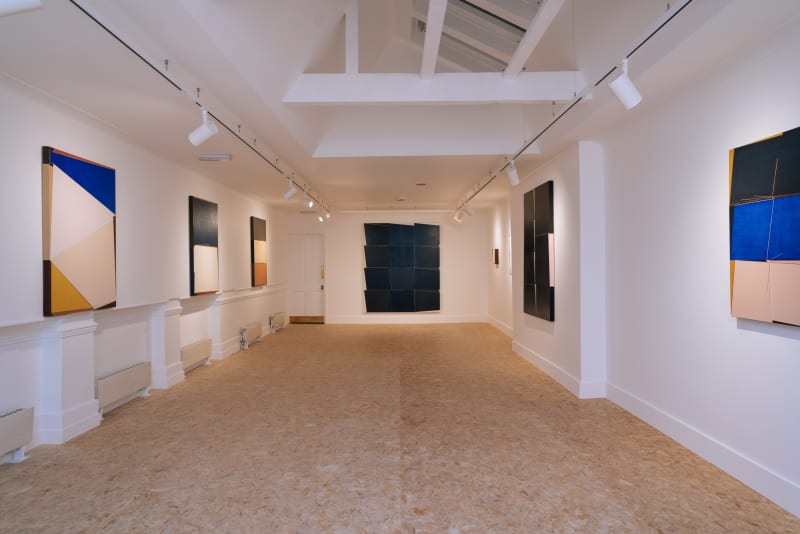Born in Shanghai in 1987, Qian Jiahua studied at the China Academy of Art in Hangzhou, where she remained following her graduation to embark on a career as an independent artist. Influenced by the work of Barnett Newman and the principles of minimalism, Qian Jiahua’s works with acrylic on canvas to produce abstract geometric compositions that demonstrate a flawless minimalism. The artist seeks to challenge the easy balance of a traditional canvas by delineating large areas of solid colour with stark borders and contrasting lines.
Producing works based on a structural abstraction, the subject of abstraction has a rich history in Chinese culture and aesthetics. Reborn following the end of the Cultural Revolution, abstract art presented a non-political aesthetic that stood in contrast to the political subject matter popular during the Mao Period. Framed almost as the art of rebellion, the abstract artist injects emotional energy into non-figurative forms, expressing new artistic techniques and styles in contrast to traditional visual tradition.
Each canvas stands alone as a single painting but effectively integrates itself into a larger work; directing the viewer’s attention between canvases by use of thin diagonals and lines which bind each work together.
Sensitive to the impact of space, Qian Jiahua’s works create subtle optical illusions, challenging the physical limitations of the flat medium on which she paints to suggest a third dimension to her pieces. Shapes with painted borders will lean outwards or be layered upon one another, not restricted by the two-dimensional canvass they occupy.
Widely collected and exhibited both domestically and internationally, Qian Jiahua has exhibited at notable institutions among which are listed: White Cube (London, UK), K11 Museum (Shanghai, CHINA), Hive Centre for Contemporary Art (Beijing, CHINA), Shanghai Gallery of Art (Shanghai, CHINA), Long Museum (Shanghai, CHINA) and Chengdu Contemporary Art Museum, (Chengdu, CHINA).
Born in Shanghai in 1987, Qian Jiahua studied at the China Academy of Art in Hangzhou, where she remained following her graduation to embark on a career as an independent artist. Influenced by the work of Barnett Newman and the principles of minimalism, Qian Jiahua’s works with acrylic on canvas to produce abstract geometric compositions that demonstrate a flawless minimalism. The artist seeks to challenge the easy balance of a traditional canvas by delineating large areas of solid colour with stark borders and contrasting lines.
Producing works based on a structural abstraction, the subject of abstraction has a rich history in Chinese culture and aesthetics. Reborn following the end of the Cultural Revolution, abstract art presented a non-political aesthetic that stood in contrast to the political subject matter popular during the Mao Period. Framed almost as the art of rebellion, the abstract artist injects emotional energy into non-figurative forms, expressing new artistic techniques and styles in contrast to traditional visual tradition.
Each canvas stands alone as a single painting but effectively integrates itself into a larger work; directing the viewer’s attention between canvases by use of thin diagonals and lines which bind each work together.
Sensitive to the impact of space, Qian Jiahua’s works create subtle optical illusions, challenging the physical limitations of the flat medium on which she paints to suggest a third dimension to her pieces. Shapes with painted borders will lean outwards or be layered upon one another, not restricted by the two-dimensional canvass they occupy.
Widely collected and exhibited both domestically and internationally, Qian Jiahua has exhibited at notable institutions among which are listed: White Cube (London, UK), K11 Museum (Shanghai, CHINA), Hive Centre for Contemporary Art (Beijing, CHINA), Shanghai Gallery of Art (Shanghai, CHINA), Long Museum (Shanghai, CHINA) and Chengdu Contemporary Art Museum, (Chengdu, CHINA).
